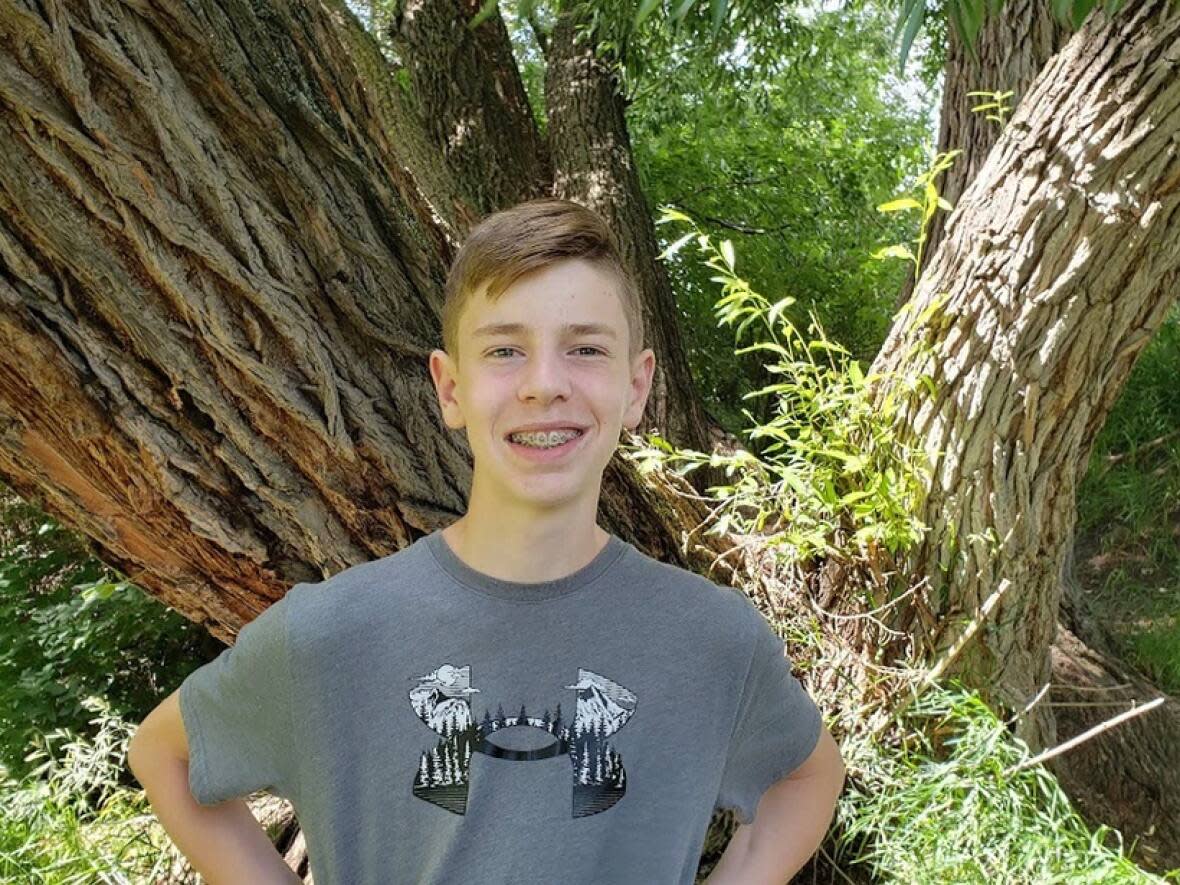Planting trees in Grade 1 is an Alberta tradition. Now 2 Edmontonians are mapping their locations

Albertans who attended grade school in the province may remember planting a tree seed when they were in the first grade.
Two Edmontonians are now trying to map out where all of the trees linked to the initiative are growing.
"Many Albertans have a strong connection to their Grade 1 tree, and [we] thought it might be fun to see if we could track them down," said master gardener Dustin Bajer, who, with the help of Grade 9 student Joshua Kirsch, is trying to find each tree planted.
What is Alberta's Grade 1 seedling program?
Seedlings are handed out during Alberta's Forest Week and Arbour Day — which usually pass during the first two weeks of May — because they celebrate Albertans' connection to trees, woodlands and forests, the provincial government's website says.
The program has existed for over 60 years.
The provincial government says it delivers nearly 70,000 tree seedlings to Grade 1 students each year, so roughly four million total trees have been planted since the program's inception.

Two species of conifer trees are distributed: White spruce (picea glauca) and Lodgepole pine (pinus contorta). Both are native to the province.
The Lodgepole pine, Alberta's provincial tree, was used by Indigenous people to make tee-pee poles. Settlers later used them to build cabins and fences, among other things.
What is the Grade 1 tree registry program?
Bajer and Kirsch are on a mission to map out all the trees past Grade 1 students planted over the years, creating a tree registry.
Kirsch, a tree enthusiast, had been creating a map of heritage trees in the city, when he came across a historic willow tree located near the West LRT line in Edmonton.
He was curious about its preservation and wanted to ensure its protection. He emailed the City of Edmonton, which connected him to Bajer.
The duo has since mapped out 60 trees so far, the oldest of which is a 66-year-old blue spruce.
The tree planted furthest away that they've found so far is in Victoria.
"The Grade 1 student at the time was in the process of moving," Bajer said while on CBC Edmonton's Radio Active. "They brought their Grade 1 tree [to B.C.] with them."
What are heritage trees?
Simply put: heritage trees are mature trees in urban areas.
Many trees die prematurely in urban settings because of weather, disease or surrounding environment conditions, such as construction and disruption. So, older trees in a city are rare.
Bajer hopes the Grade 1 tree registry starts a conversation about what can be done to preserve trees in Edmonton.
"These trees are part of that story," he said. "If they're planted 66 years ago, they're big, beautiful, privately-owned trees that are, in fact, helping mitigate temperature and climate extremes."
How do you register?
You can register your tree on the Grade 1 tree website via a Google form.
Answers from the form are then pulled and inserted into a map.
"You can click on an individual tree icon and it'll say who planted it and where it's planted," Bajer said.
"We have a little bit of a way to go, but it's been great to see them pop up on the map with some photos and some stories from the actual folks who planted them."
LISTEN | Where are all of Alberta's grade 1 trees?

 Yahoo Movies
Yahoo Movies 
